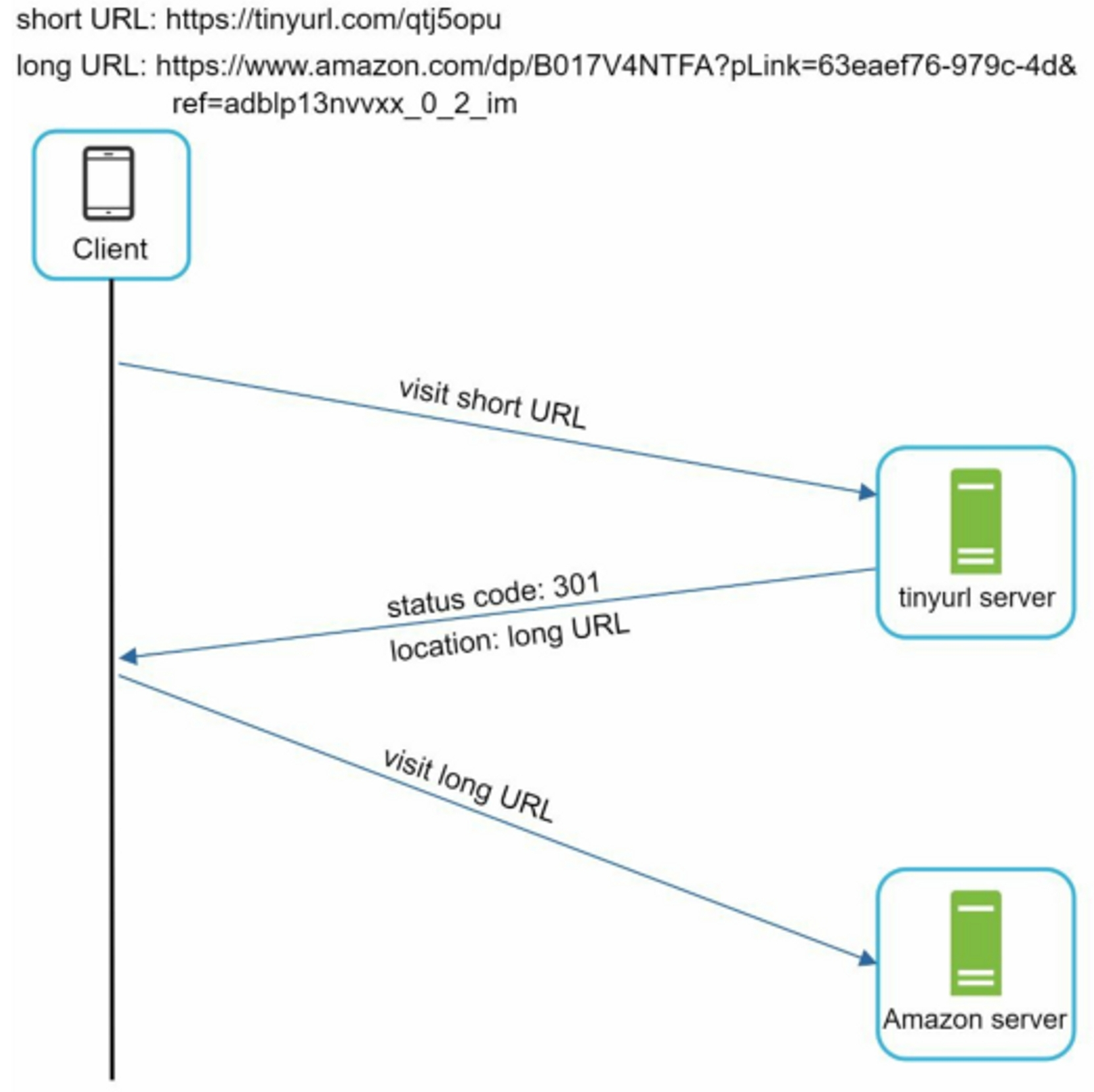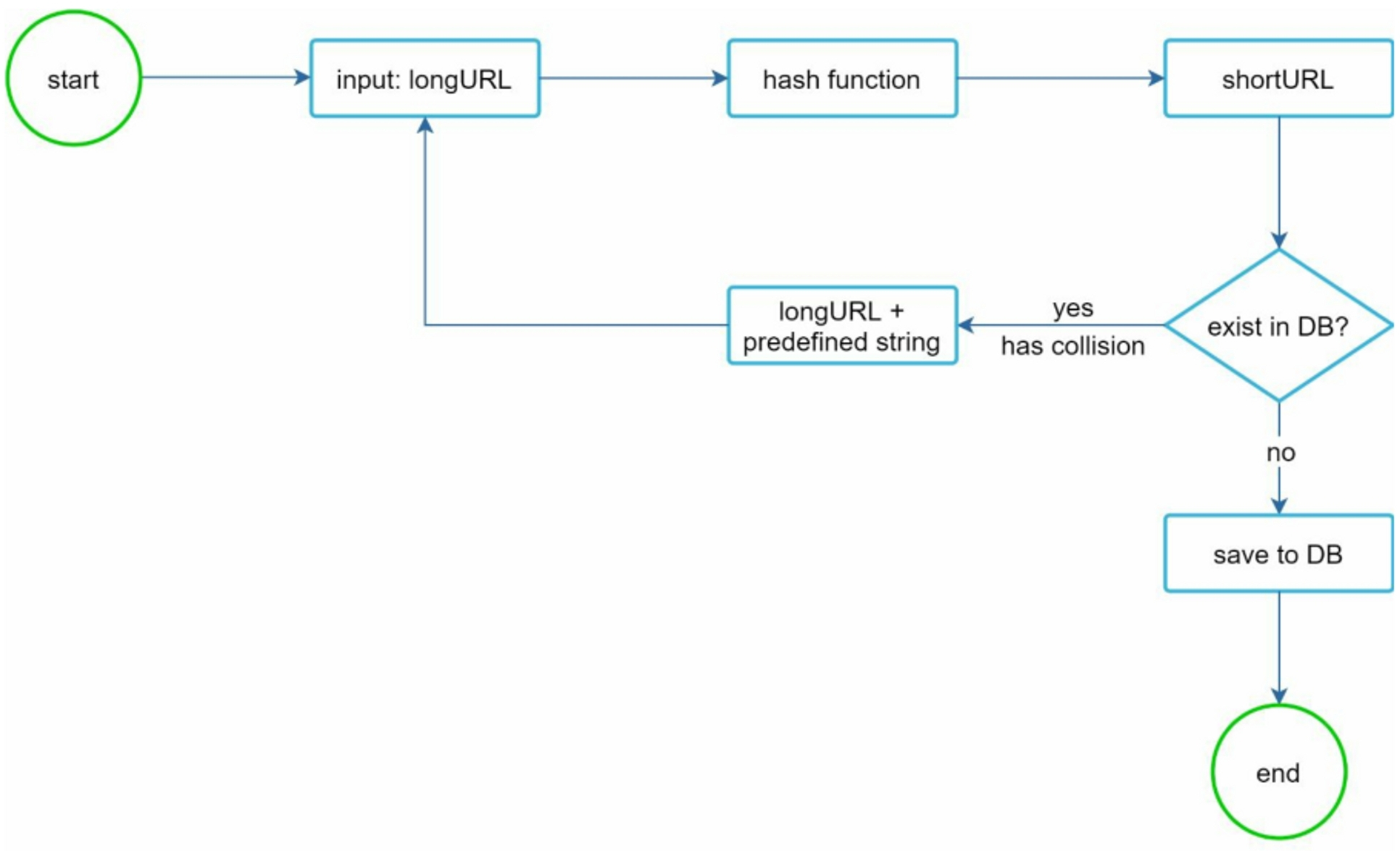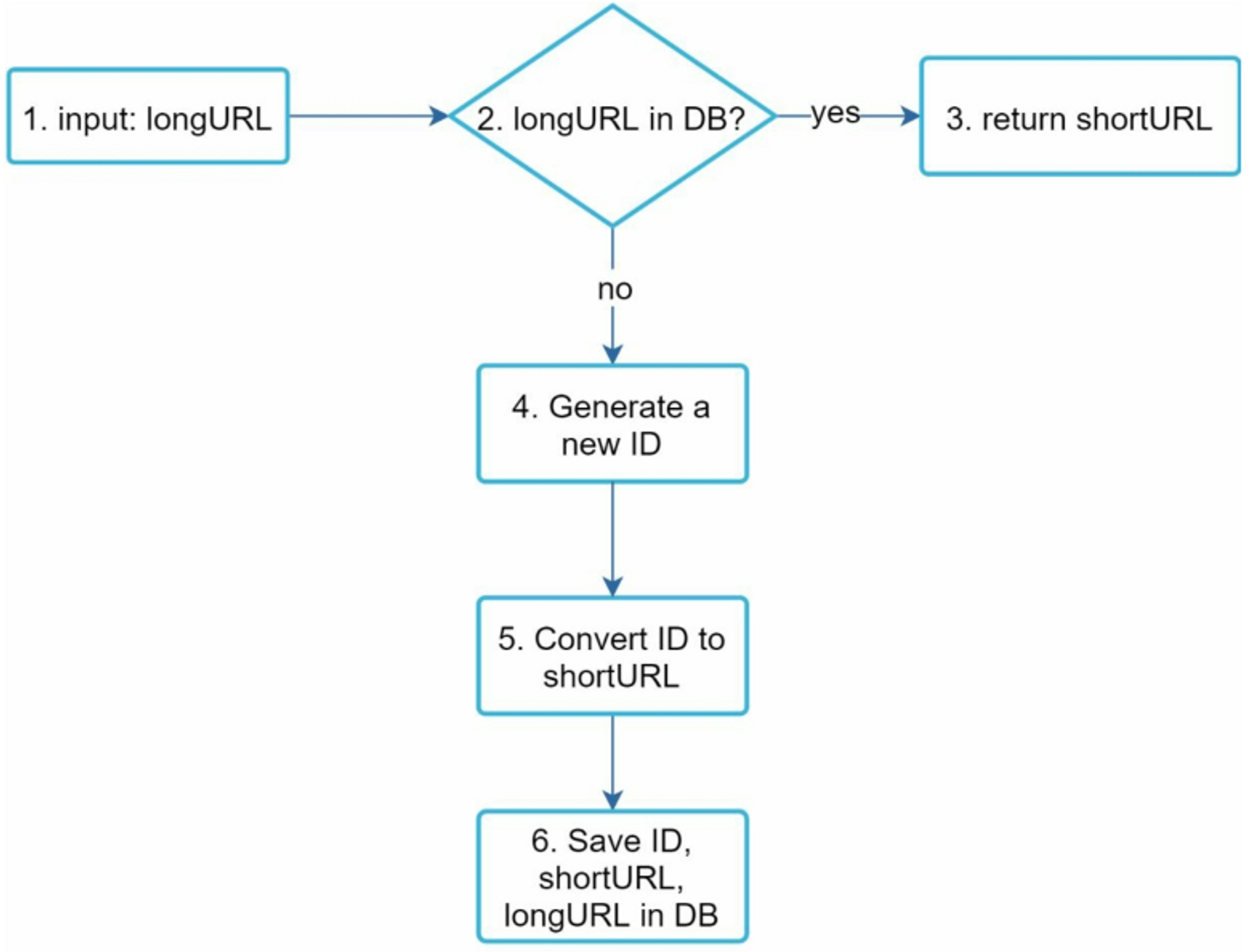System Design - URL Shortener
1. Understand Problem and Establish Design Scope
- Can you give an example of how a URL shortener work?: Assume URL https://www.amazon.com/ is the original URL. Your service creates an alias with shorter length: https://tinyurl.com/y7keocwj. If you click the alias, it redirects you to the original URL.
- What is the traffic volume?: 100 million URLs are generated per day.
- How long is the shortened URL?: As short as possible
- What characters are allowed in the shortened URL?: Shortened URL can be a combination of numbers (0-9) and characters (a-z, A-Z).
- Can shortened URLs be deleted or updated?: shortened URLs cannot be deleted or updated.
basic use cases:
- URL shortening: a long URL => a much shorter URL
- URL redirecting: a shorter URL => the original URL
- High availability
- Scalability
- Fault tolerance
1.1 Back of the envelope estimation
- Write operation: 100 million URLs are generated per day.
- Write operation per second: 100 million / 24 / 3600 = 1160
- Read operation: Assuming ratio of read to write is 10:1, read operation per second: 1160 * 10 = 11,600
- Assuming URL shortener service will run for 10 years: 100 million * 365 * 10 = 365 billion records
- Assuming Average URL length is 100, storage requirement: 365 billion * 100 bytes * 10 years = 365 TB
2. Propose High-level Design and get buy-in
2.1 API Endpoints
A URL shortener primary needs two API endpoints:
- URL shortening: a client sends a
POSTrequest, contains one parameter: the original long URL. For example:- URL:
api/v1/data/shorten - request parameter: {longUrl: longURLString}
- Return: shortURL
- URL:
- URL redirecting: a client sends a
GETrequest. For example:- URL:
api/v1/shortUrl - Return: longURL for HTTP redirection
- URL:
2.2 URL redirecting
Once the server receives a tinyurl request, it changes the short URL to the long URL with 301 redirect.
The most intuitive solution: hash table. Assuming the hash table stores <shortURL, longURL> pairs, URL redirecting can be implemented by the following:
- Get longURL: longURL = hashTable.get(shortURL)
- Once you get the longURL, perform the URL redirect.
2.3 URL shortening
Assume the short URL looks like: www.tinyurl.com/{hashValue}, we need a hash function fx that maps a long URL to the hashValue, The requirements of hash function:
- Each
longURLis hashed to onehashValue - Each
hashValuecan be mapped back to thelongURL.
3. Design deep dive
3.1 Data model
Since memory resources are limited and expensive, we cannot store everything in a hash table. A better option is to store <shortURL, longURL> mapping in a relational database, the simplified version of the table contains 3 columns: id, shortURL, longURL.
3.2 Hash function
Hash function is used to hash a long URL to a short URL, also known as hashValue. The hashValue consists of characters from [0-9, a-z, A-Z], containing 10 + 26 + 26 = 62 characters.
3.2.1 Hash Collision
Use well-known hash functions like CRC32, MD5, or SHA-1 to hash a long URL to a 7 characters string, but this method can lead to hash collisions. To resolve hash collisions, we can recursively append a new predefined string until no more collision is discovered.
- Drawback: it is expensive to query the database to check if a shortURL exists for every request.
- Solution: bloom filter
3.2.2 Base 62 Conversion
Base conversion helps to convert the same number between its different number representation systems. Example to explain how the conversion works: convert ${11157}_{10}$ to base 62 representation:
- 0-0, ..., 9-9, 10-a, 11-b, ..., 35-z, 36-A, ..., 61-Z,
- ${11157}_{10}$ = 2 x 62^2 + 55 x 62^1 + 59 x 62^0 = [2, 55, 59] -> [2, T, X] in base 62
Thus, the short URL is https://tinyurl.com/2TX
3.2.3 Comparison of the Two Approaches
| Hash + collision resolution | Base 62 conversion |
|---|---|
| Fixed short URL length | The short URL length is not fixed, it goes up with ID |
| It doesn't need a unique ID generator | depends on a unique ID generator |
| Collision is possible and must be resolved | Collision is impossible because ID is unique |
| impossible to figure out the next available short URL | easy to figure out the next available short URL, it's a security concern |
3.3 URL Shortening Deep Dive

- Input longURL
- The system checks if the longURL is in the database
- If it is, it means the longURL was converted to shortURL before
- If not, the longURL is new. A new unique ID is generated by an unique ID generator
- Convert the ID to shortURL with base 62 conversion
- Create a new database row with the ID, shortURL, and longURL
Problem: we have to implement a unique ID generator in distributed environment
Solution: refer to chapter 7
3.4 URL Redirecting Deep Dive
As there are more reads than writes, <shortURL, longURL> mapping is stored in a cache to improve performance.
- User clicks a short URL link
- Load balancer forwards the request to web servers
- If a shortURL is already in the cache, return the longURL directly
- If shortURL not in the cache, fetch the longURL from the database
- If shortURL not in the database, it is likely a user entered an invalid shortURL
- Return longURL to user
4. Wrap up
Additional talking points:
- Rate limiter: filter out requests based on IP address or other filtering rules
- Web server scaling: scale the web tier by adding or removing web servers
- Database scaling: Database replication and sharding
- Analytics: help to answer important questions like how many people click on a link? When do they click the link? etc
- Availability, consistency, and reliability